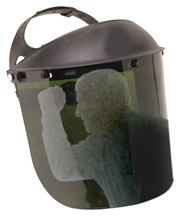 |
 |
 |
|
Coverage Concerns Confrontations and protests Riots, civil commotions and vandalism create coverage concerns By Roy C. McCormick As American citizens, most of us expect that protest marches will be peaceful—with city approval and observance of requirements. Unfortunately, this is not always the case. Organized marches—as well as spontaneous outbursts—often can escalate into civil commotions or destructive riots. As a result, we must have a good understanding of how commercial property insurance will protect the owners and occupants of nearby buildings and stores. Riot and civil commotion are not defined in commercial property insurance policies and forms. Instead, major court decisions (remarkably uniform) provide the guidelines, often based on dictionary definitions or statutes. “Riot” is defined both in dictionaries and by statute as the assemblage of three or more people that results in the use of force against individuals or property. Bouvier’s Law Dictionary summarizes five elements that comprise a riot: “At least three persons must be involved; there must be a common purpose; there must be actual inception or execution of that purpose; there must be an attempt to help one another or to cooperate by force if necessary; there must be a display of force or violence in such manner as to alarm a person of reasonable courage.” “Civil commotion” has been described in courtrooms as “an uprising among a mass of people which occasions a serious and prolonged disturbance and an infraction of civil order, not attaining the status of war or armed insurrection. It requires the wild or irregular action of many persons assembled together.” Riot and civil commotion coverage Commercial property causes of loss forms and businessowners policies, including those drafted by the Insurance Services Office (ISO) and the American Association of Insurance Services (AAIS), include coverage for riot or civil commotion. Most policy forms make it clear that property damage for riot or civil commotion includes damage done by angry strikers when the police classify labor unrest as a riot or civil commotion. Unrelated to labor problems, coverage for damage caused by rioting includes looting by participants who steal merchandise or other property from premises that they have damaged and entered. The only exclusion specifically applicable to riot or civil commotion is for loss caused by war, civil war, insurrection, rebellion, attack and defense by any government using military personnel or other agents. Underwriting rules provide the option to remove riot or civil commotion coverage. Doing this for cost reasons should be discouraged. The potential for loss is substantial and could be crippling. Vandalism—a close cousin Vandalism coverage is included as a basic in most forms. Its meaning and importance should be explained to insureds. Vandalism and riot or civil commotion perils are mutually exclusive; coverage may be found under the former when circum-stances are not within the scope of the latter. “Vandalism” is defined as “willful and malicious damage to or destruction of the described property.” It can be committed by a single person or more than one person. It dovetails with riot or civil commotion coverage. An often-cited court decision is North Bay School Authority v. Industrial Indemnity Company, rendered by a California Court of Appeals in 1992. This decision clarified the difference between riot or civil commotion and vandalism and its significance. The case involved four people who broke into two neighboring buildings on three separate occasions, vandalizing property and setting fires. The court concluded that such acts, committed out of public view with the intent that they not be observed, do not constitute a riot. The distinction underscores the importance of coverage for the vandalism peril along with riot or civil commotion coverage. Vandalism claims occur more frequently under homeowners policies than do claims for riot or civil commotion. However, the coverage combination is important. Reimbursement for additional living expense as a feature of homeowners coverage can be of great financial importance for insureds when a home becomes temporarily unlivable because of acts of vandals, or for other covered causes of property damage and loss. Additional coverage It also is important to consider the importance of earnings insurance in addition to coverage for loss of merchandise from looting during the course of a riot. Merchants often are unable to carry on business for long periods of time following a riot. This coverage indemnifies an insured business for loss of income caused by riot or civil commotion, as well as any other covered peril. We would hope that there never will be recurrences of the rioting experienced in Los Angeles in 1992. But violent demonstrations recently experienced abroad, including those by people wanting jobs and those staged at international meetings, indicate an increasing potential. At home, immigrant marches have become a matter of concern, although organizers recognize the importance of keeping them orderly—and so far have done so. Insurance advisors should prepare their clients.* The author |
|
|||||||||||||
| ||||||||||||||
